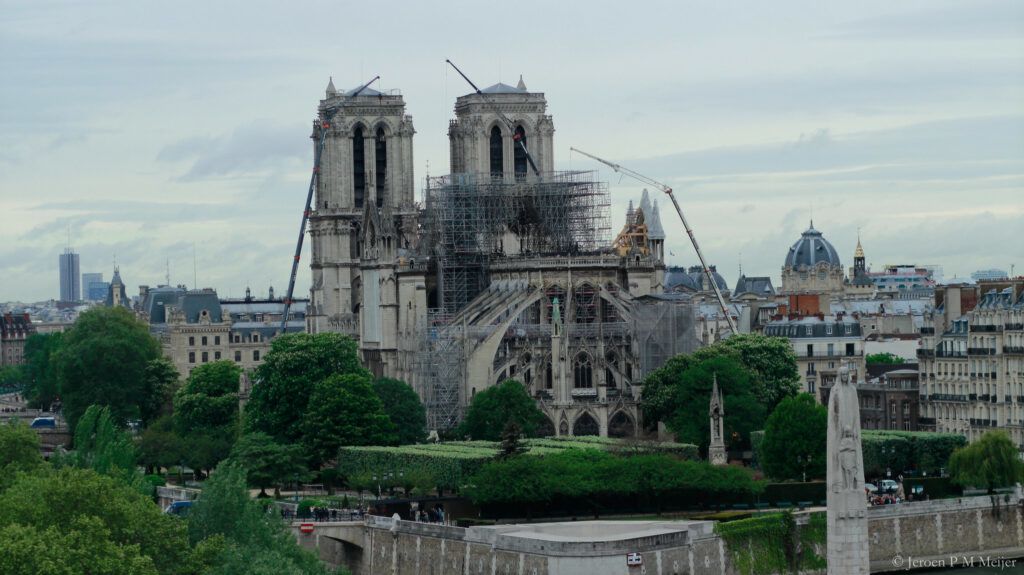Notre Dame Restoration Halted Due to High Lead Levels
The April 15 blaze that severely damaged the Notre Dame Cathedral in Paris may have also contaminated much of the city with lead, according to recent reports.

Massive quantities of the toxic substance, which was present in the cathedral’s spire and roof, are said to have been dispersed into the air and deposited on the ground. Environmental groups in France have banded together with a top labor union to demand that the Notre Dame be covered and sealed while lead concerns are addressed.
“The 440 tonnes of lead that went up in smoke during the fire represent more than four times the annual lead emissions in the atmosphere for all of France,” said Annie Thébaud-Mony, a researcher and spokesperson for the environmental health group Association Henri Pézerat during a press conference outside the 850-year-old cathedral.
Lead is a neurotoxin, and its effects include decreased intellectual capacity in children, male fertility, and transmission to new generations. It’s stored in the bones for decades, too, and can be released back into the bloodstream during pregnancy, greatly endangering the fetus.
The proposed process would involve enveloping the entire building in airtight plastic sheeting draped over a metal scaffolding, which would drop the air pressure within the tent to keep lead particles from leaking inside while decontamination work is carried out.
Under pressure from the groups, the City of Paris has temporarily paused decontamination work to do an assessment of the cathedral. It was initially said that work would resume this week, but even that start date has now been postponed while more drastic decontamination measures are considered — despite Deputy mayor Emmanuel Gregoire’s insistence that there is no risk around the damaged landmark.
Some of the techniques that could be used include spreading a gel on the ground that absorbs the lead, which has to sit for three days before it’s removed, or using high-pressure water jets with chemical agents to decontaminate the soil.
At the end of July, two schools southwest of the cathedral, which were downwind of the fire, were closed over lead fears. About 175 children were tested, and so far, two have been found to have high levels of lead in their blood, while another 16 are considered borderline and require monitoring.
Workers, police officers, firefighters, street cleaners, and staff at the hotel across the street are also at risk, says Benoit Martin, leader of the Paris CGT Union. He urges all responders, clean-up crews, and people who live and work nearby to get blood tests.

“If the calendar for Notre-Dame’s reconstruction is delayed a few months, that isn’t a problem to us,” Martin said. “What’s important to us isn’t the calendar some people want to go quickly. One has to take the time to treat the problems one after the other: contain, decontaminate, rebuild.”
Gregoire says the sites will be “rigorously cleaned” before the school year starts in September, and that children will only be allowed to return if the schools are deemed safe by health authorities. Still, he rejected the idea of containing the cathedral in plastic, calling it unnecessary.
The public can view updates on lead test results at the City of Paris website.




